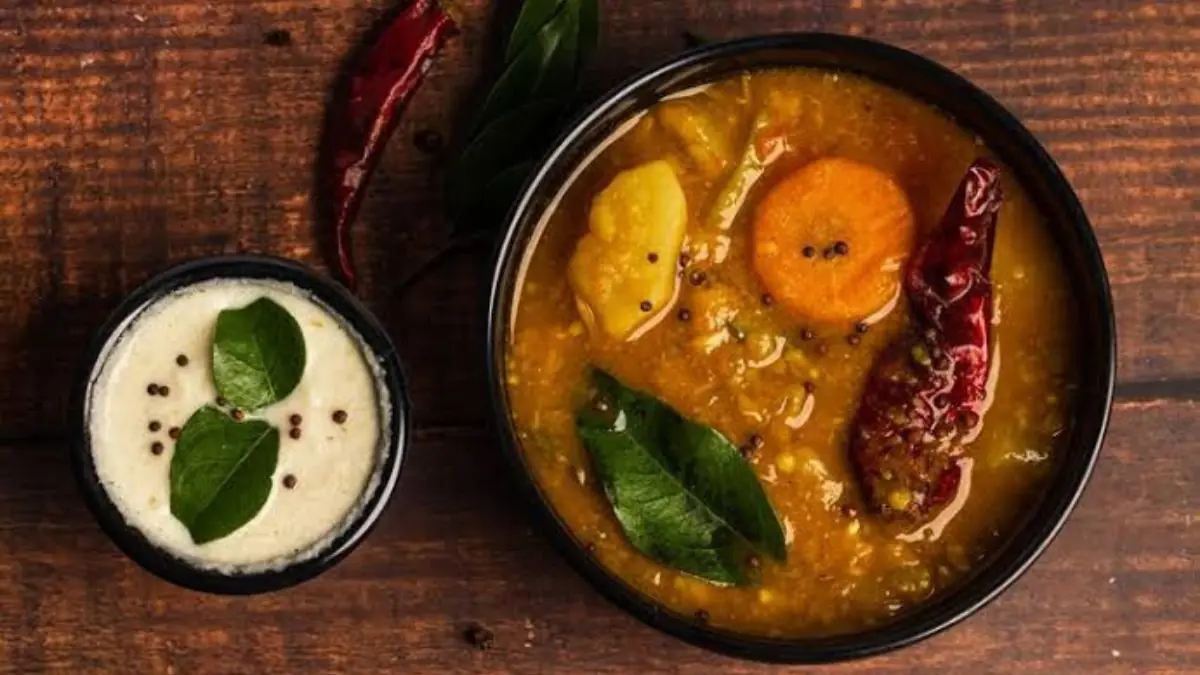Sambar is a staple dish in Tamil Nadu, often served as the main accompaniment for breakfast, lunch, and dinner. It is prepared using toor dal (pigeon peas) that are cooked until soft, then combined with tamarind extract, seasonal vegetables, and a unique spice blend known as sambar powder. The flavour is balanced between tanginess from tamarind, heat from red chillies, and a deep earthiness from roasted spices.
In traditional Tamil cooking, vegetables such as drumstick, brinjal, pumpkin, and okra are popular choices for sambar, each adding a different texture and taste. The sambar powder is made from roasted lentils, coriander seeds, dried chillies, and curry leaves, which together create the distinctive aroma. Using fresh homemade powder gives the most authentic taste, although good-quality store-bought powder also works well.
Nutritionally, Tamil-style sambar is rich in plant-based protein, fibre, and essential vitamins from both the dal and vegetables. It is naturally gluten-free an
Sambar is a staple dish in Tamil Nadu, often served as the main accompaniment for breakfast, lunch, and dinner. It is prepared using toor dal (pigeon peas) that are cooked until soft, then combined with tamarind extract, seasonal vegetables, and a unique spice blend known as sambar powder. The flavour is balanced between tanginess from tamarind, heat from red chillies, and a deep earthiness from roasted spices.
In traditional Tamil cooking, vegetables such as drumstick, brinjal, pumpkin, and okra are popular choices for sambar, each adding a different texture and taste. The sambar powder is made from roasted lentils, coriander seeds, dried chillies, and curry leaves, which together create the distinctive aroma. Using fresh homemade powder gives the most authentic taste, although good-quality store-bought powder also works well.
Nutritionally, Tamil-style sambar is rich in plant-based protein, fibre, and essential vitamins from both the dal and vegetables. It is naturally gluten-free and vegetarian, making it suitable for a wide range of diets. The dish is also versatile and allows you to adjust the spice and tang levels to your preference.
To prepare it, the dal is cooked until creamy and smooth, the vegetables are boiled in tamarind water until tender, and the spice blend is added for flavour. A final tempering of mustard seeds, curry leaves, and asafoetida in hot oil enhances the aroma and taste. The result is a hearty, comforting dish that can be enjoyed with a variety of South Indian staples.
This recipe stays close to traditional Tamil flavours while being simple enough for a home kitchen. It can be prepared in under an hour, stored for a day in the fridge, and reheated without losing much of its flavour.








